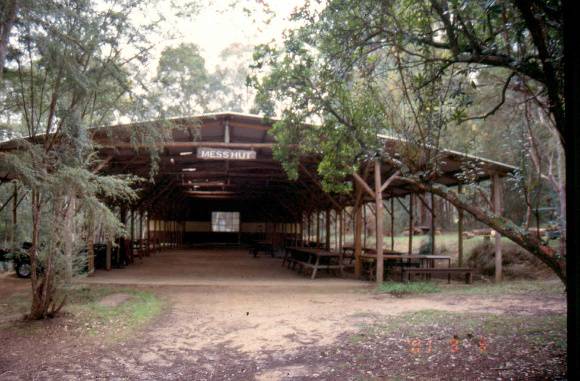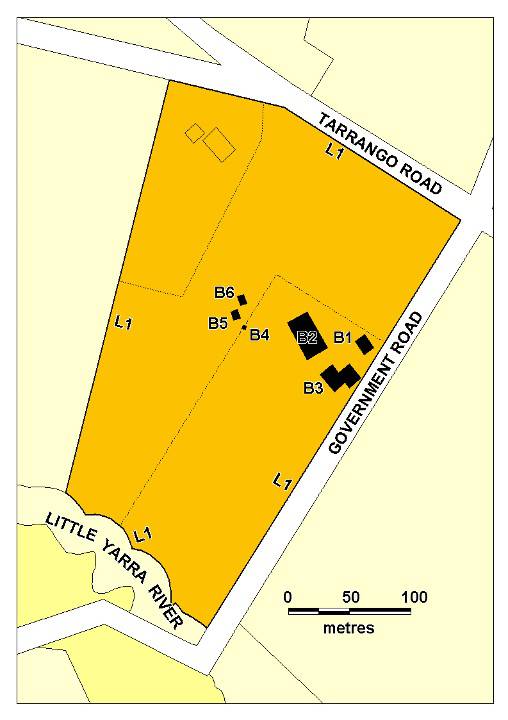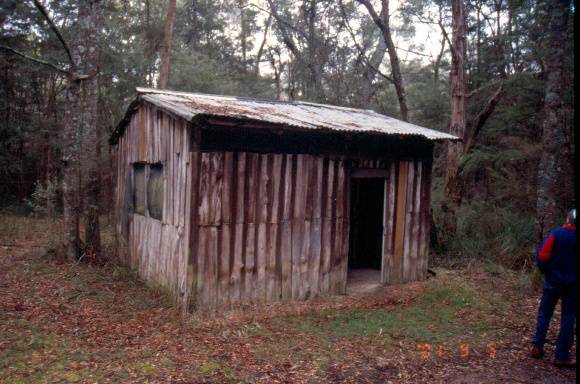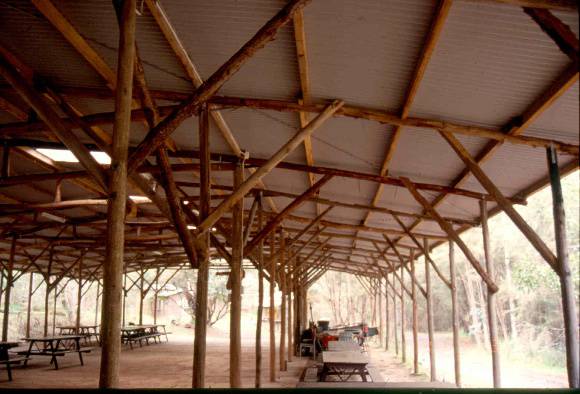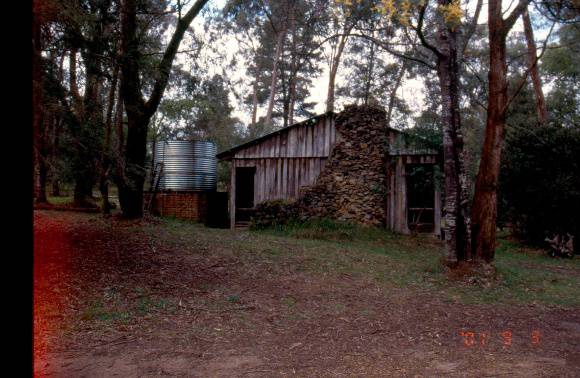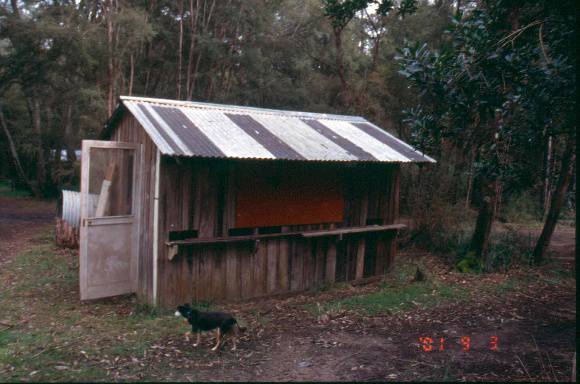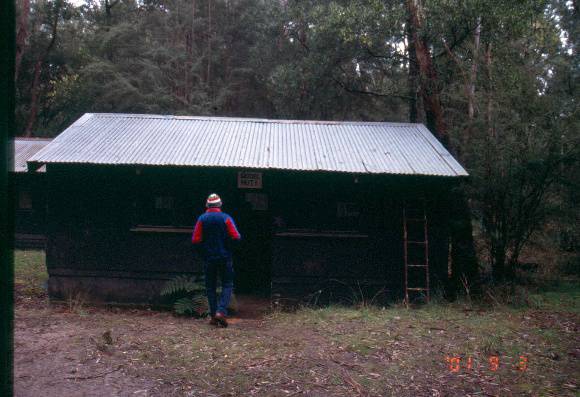| Back to search results » | Back to search page » |
|
CAMP EUREKA
Location90-100 TARRANGO ROAD YARRA JUNCTION, YARRA RANGES SHIRE
File NumberHER/2000/000047 (1)LevelRegistered |
|
Statement of Significance
What is Significant? The site plan and buldings date from the period of 1946 to the early
1950s. Camp members built a number of huts for accommodation, a
recreation hut, toilet and shover blocks. Building construction was
from salavaged materials and were designed with a simple, rustic look.
The largest of these is the mess hut, open on three sides with a
corrugated iron roof and bush pole support. This area was used for
dining as well as concerts with a small stage at the closed end of the
building. Its construction and design was influenced by the experience
of members during the war. Nearby are the Kitchen and the Recreation
Hut. The Recreation Hut boasts a large fireplace faced with stone on
the exterior, the rest of the building is of timber
construction.Smaller Huts suitable for accommodation are scattered
about the site. The most significant of these is the Model Hut (so
called as it was to serve as a model for other huts on the site) and
the medical hut. The medical hut is surprisingly intact and retains
many of its features form when it was used as a clinic during the
Camp's heyday. It too, is of simple bush pole frame construction and
malthoid over palings. How is it significant? Why is is significant? A December 1946 article in The Guardian (the official
communist newspaper) announced tha the first holiday camp would be
held at Camp Eureka from 23 December 1946 to 5 Jaunary 1947. The
campers would enjoy hikes, sports days, volley and basket ball,
dancing, concerts and film screenings. (The films were provided by the
Realist Film Unit who while providing documentaries also screened
Charlie Chaplin Films). Camp members were to provide a days labour and
contribute to the construction of the camp. Until the mid 1950s, large
numbers (up to 1,000) attended the Camp at Christmas and Easter.
Amongst those attending the Camp in this period was cartoonist Noel
Counihan, jazz musicans Graeme Bell and Fred Johnston and the author
Frank Hardy who completed the novel Power without Glory at
the Camp in 1949. The shared work ethic, the design of the buildings and the general
philosophy that was found in the Camp was an important component in
left wing thinking and in particular offered a place of refuge and
company for like minded souls during the Cold War period. By the late 1960s the site had been largely abandoned and the Eureka
Youth League had ceased to exist. In the early 1970s, former campers
returned to the site and determined that the site could be refurbished
and reused as a holiday destination again. A collective was formed and
slowly the buildings are being renewed using volunteer labour as before.
Camp Eureka is the last surviving campsite in
Australia used by the Eureka Communist League.The Campsite in the
Yarra Ranges was originally a farmhouse (of which only the barn
remains). The land was given to the Eureka Communist League in 1945.
It is now in a bushland setting, but when the site was first used as a
Camp in December 1946 it had been substantially cleared.Since then
every effort has been made to enhance the natural elements of the site
including the planting of natives and the revegetation the site.
Camp Eureka is of historic, social and
architectural, archaeological significance to the state of Victoria
and its importance is of Australian wide signifincance.
The Eureka Youth League was formed in 1941
as a successor to a number of other bodies associated with the
Communist Party. Its predecessor's had organised camps throughout the
1920s and 1930s to Phillip Island and Rosebud. Similar organisations
run camps at Corrimal on the South Coast of New South Wales and
Maroochydore in Queensland.
Group
Recreation and Entertainment
Category
Holiday Camp


